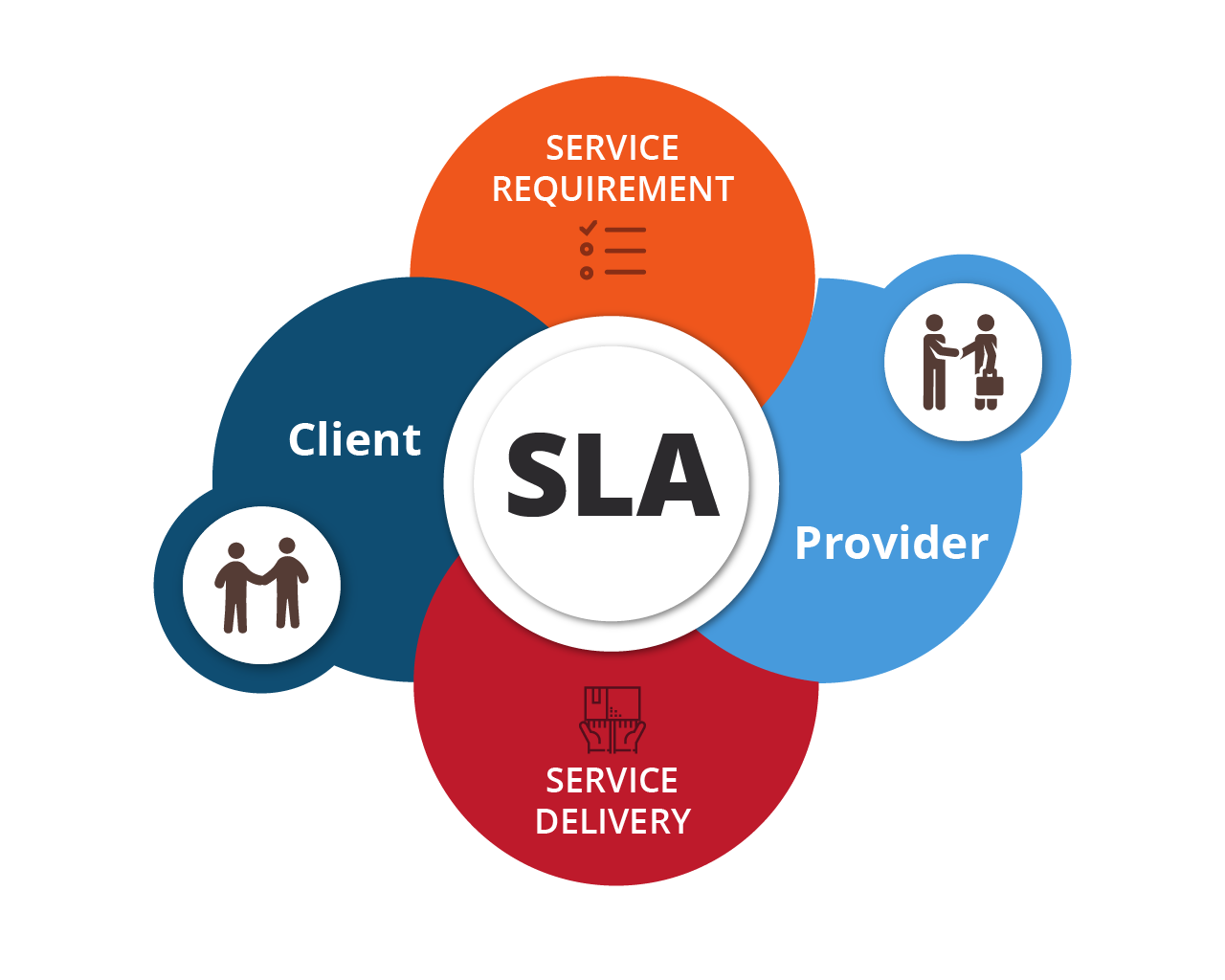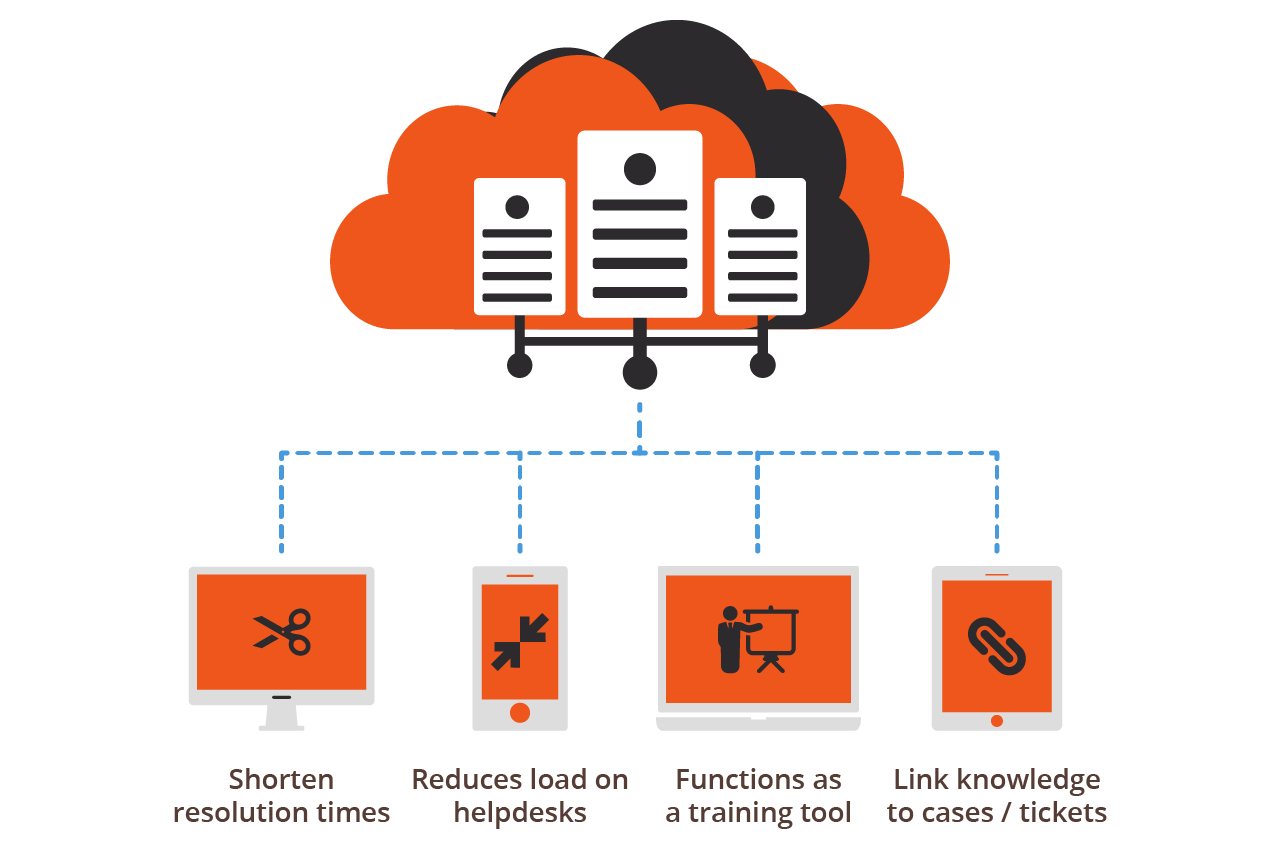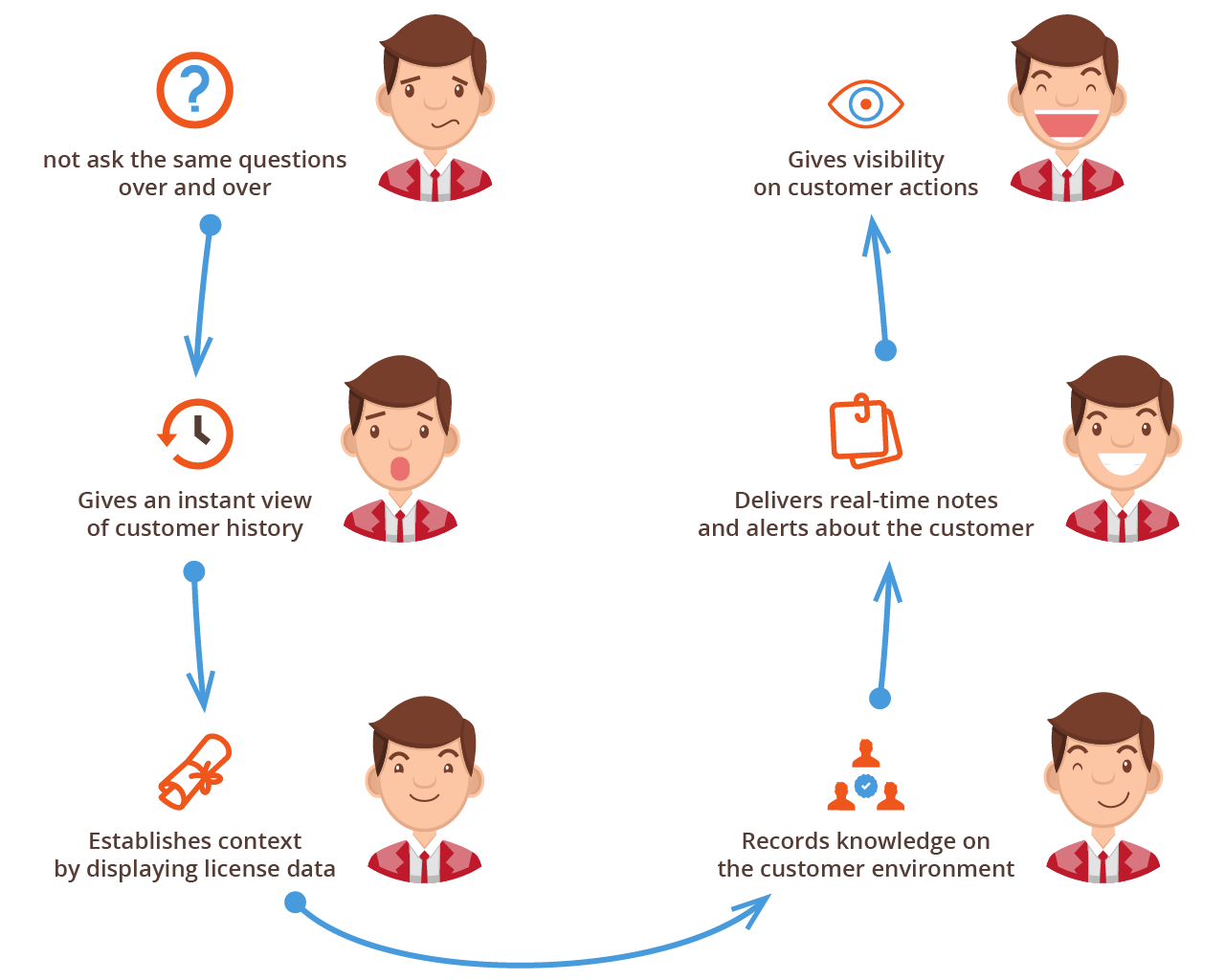When delivering customer support, how amazing would it be to answer their call, bring up the customer in your support system and know everything about them? A 360-degree view aims to give you that ability, and even anticipate the problem before it arises.
The ‘360-degree customer view’ buzz phrase has been around for several years now and has become an important requirement in customer service organizations. Ideally this view gives companies an aggregated and holistic view of a customer in order to best serve them. In combination with a proficient customer support system, its greatest strength is that a 360-degree view gives companies the most accurate and current information about a customer the very instant it’s needed.
Unfortunately most companies end up having to go to other parts of their application or into an external one such as a CRM for customer information. This inevitably wastes time and resources and leaves the client feeling poorly served. A 360-degree view helps to avoid all of this in very specific ways.

But what makes a true 360 degree customer view?
There are three requirements:
1. A view of the past. You must have clear, organized, and transparent visibility of a customer’s history with you.
2. A view of the present. You must be able to quickly and accurately view what is currently happening to the customer. This could mean other open issues, current license data, or social commentary.
3. A view of the future. You must be able to predict what the customer might need going forward including their satisfaction with your support or product, or what future issues might arise.
If you are missing even one of these elements, there will certainly be a deficiency in the way you serve your clients.
But, when you have a true 360 degree customer view, in combination with a proficient support system, the benefits to your organization happen in very specific ways, it:
– Helps to avoid communication repetition from your agents
– Gives an instant view of customer history with insights into client behavior and also previous issues
– Establishes context by displaying license data, products purchased and service level agreements
– Records knowledge on the customer environment in the form of linked knowledge base content
– Delivers real-time notes and alerts about the customer from other departments such as Sales and Account management
– Gives visibility on customer actions within social media channels
56% of customers have to re-explain an issue when speaking to help desks.
(Harvard Business Review)
In order to achieve a 360 customer view, your customer support software requires a certain set capabilities:
CRM Integration
CRM integration allows you to synchronize all relevant information giving your support team visibility into the customer. At a minimum the following items should be synchronized:
– Company list
– Contact list
– Company assets (what products and services they have bought)
By synchronizing your CRM, you allow your agents to quickly view what, when, and how they have purchased your products.
Single Pane of Glass View
If you are not familiar with the term, a single pane of glass view gives the user “big” picture visibility into the customer or case. In this article’s context we are specifically speaking of the case or ticket view.
Customer visibility gives you one piece but without a wholistic view of the case, it is very difficult to deliver exceptional support. A single pane of glass view gives you visibility into:
– Activities
– Time that has been spent
– Internal discussions on the customer or case
– Events such as transfers or escalations
– Calendar events
– Surveys and satisfaction scores
Accountability
A requirement of 360-degree customer views that is often missed is the portion of service level accountability. A customer service SLA (service level agreement) defines how your customer will get support from you, how they will receive support from you, and what to expect from your support team.
Your system should take the guess work out for your agents and show you when you need to respond and how often you’ve missed your SLA.
You can read more about SLAs here.

System Flexibility
System flexibility is constantly over looked. Systems focus either on keeping it simple or making it too complex. Supportbench is a good example of a customer service system that takes the best of both worlds to ensure that businesses can choose what’s best for them.
When choosing customer service / helpdesk software, take some good time to ensure that your system can adapt and scale to your business. New data points constantly come up in business and having a system that can integrate with your applications is key to having 360 customer view.
Knowledge Storage
Having an external knowledge base is great for customers, but investing in an internal one gives your agents the power to view common issues within your business. Knowledge bases are a great tool for your agents to:
– Shorten resolution times
– Reduces load on helpdesks
– Functions as a training tool
Supportbench goes a step further and creates a KCS or Knowledge Centric Support environment, allowing agents to create knowledge linked to companies as well for others to view. Company knowledge can keep environment information or important configurations set during your product/service implementation.

Alerting
A 360 customer view allows you to be notified on events that are related to them in real-time. This could be an email, within the customer service / helpdesk application, mobile/browser push notification, or a text message.
Alerting helps your teams to react to customers right away, taking away the need pro-actively monitor customers. Some events that you should be monitoring:
– Incoming communication (new and existing cases)
– SLA (Service Level Agreement) warnings and infractions
– Case events such as others commenting
– Negative customer satisfaction results
– Negative NPS (Net Promoter Results) results
Having a system that is able to not only handle the normal events above but also custom business triggers (customer escalation count, case activity count, etc…) can greatly enhance your 360 customer view.
Visibility
Visibility into customer and case activity is an essential component for creating proper context when supporting customers.
Visibility gives agents the power to view:
– Previous issue history
– Communication and what types of activities were completed
– Contact list with who has been creating issues
– Licensing and SLA data
– Customer satisfaction and NPS scores
– Social media activity
– How much time has been spent with the customer
– Company knowledge
– Calendar event history
Using the information above, agents have the power to pivot into the data they need to resolve incoming issues or pro-actively react.
Do you have a true 360 customer view?
If you don’t have all of the above implemented, you are not alone. A true 360 degree customer view encompasses a lot of potential channels. 360 customer view is not necessary to deliver great customer support, but it does help tremendously. It can save you time, costs, and customers.
Having a good customer service solution can fill in the gaps of a true 360 degree view out of the box. Many systems claim to say they have a 360 degree view of the customer. Unless you can view and are able to react to the past, present and current customer challenges, then you might benefit from researching what gaps you can fill with your current solution or migrate elsewhere if you provider can’t fill the gaps you need.












